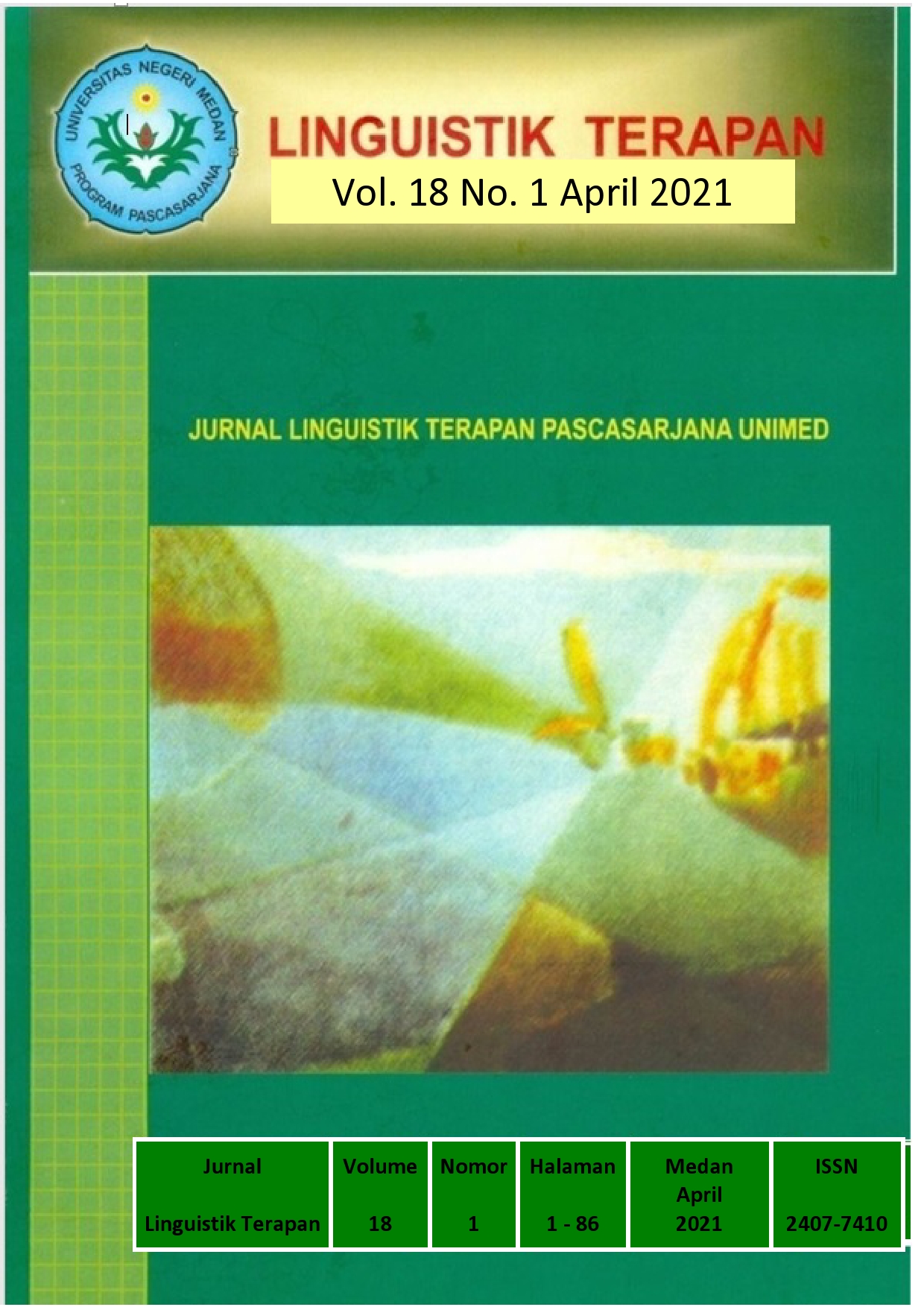THE TYPES OF TRANSLATION METHOD IN WEBTOON TRUE BEAUTY AS DIGITAL COMIC BY YAONGYI
DOI:
https://doi.org/10.24114/lt.v18i1.25378Abstract
ABSTRACTThe objectives of this study were 1) to investigate the types; 2) to describe the process; and 3) to explain the translation method applied in Webtoon: True Beauty as Digital comic by Yaongyi. The data of this study were the sentences produced by Jukyung as the main character on this Webtoon and taken randomly on 20 episodes from episode 3 until 98 episodes. This study was conducting by descriptive qualitative method. The technique of collecting was used documentary technique. The findings of 1) The Types of translation method consecutively: Free (48.8%), Literal (27.8%), Idiomatic (9.94%), Communicative (5.32%), Word for Word (4.44%), and Faithful (3.55%). 2) The Process of translation method consecutively: The Level of Naturalness (47.0%), Referential (22.2%), Textual (21.8%), and Cohesive Level (8.88%). 3) The reason of having of translation method there were three reason in True Beauty Webtoon as Digital Comic by Yaongyi, consecutively: 1) Desire to conform the relation norm between original text and translated text, on this study there was one reason that is Free Translation that appropriate with assessing to clear the meaning acceptable for the reader, 2) Desire to conform to the communication norm for achieving readability while producing the target language, on this study there was one reason that was Literal Translation and last was 3) The expectancy norm of the target language community, it was concern what the translation should be like based on the readers expectant, on this study there were three that was communicative, faithful, and free translation Keywords: Qualitative Research, Meaning, Translation Method, Webtoon, Digital ComicDownloads
Published
2021-06-03
How to Cite
Sitorus, F. A., Husein, R. ., & Murni, S. M. (2021). THE TYPES OF TRANSLATION METHOD IN WEBTOON TRUE BEAUTY AS DIGITAL COMIC BY YAONGYI. LINGUISTIK TERAPAN, 18(1), 40–47. https://doi.org/10.24114/lt.v18i1.25378
Issue
Section
Articles






